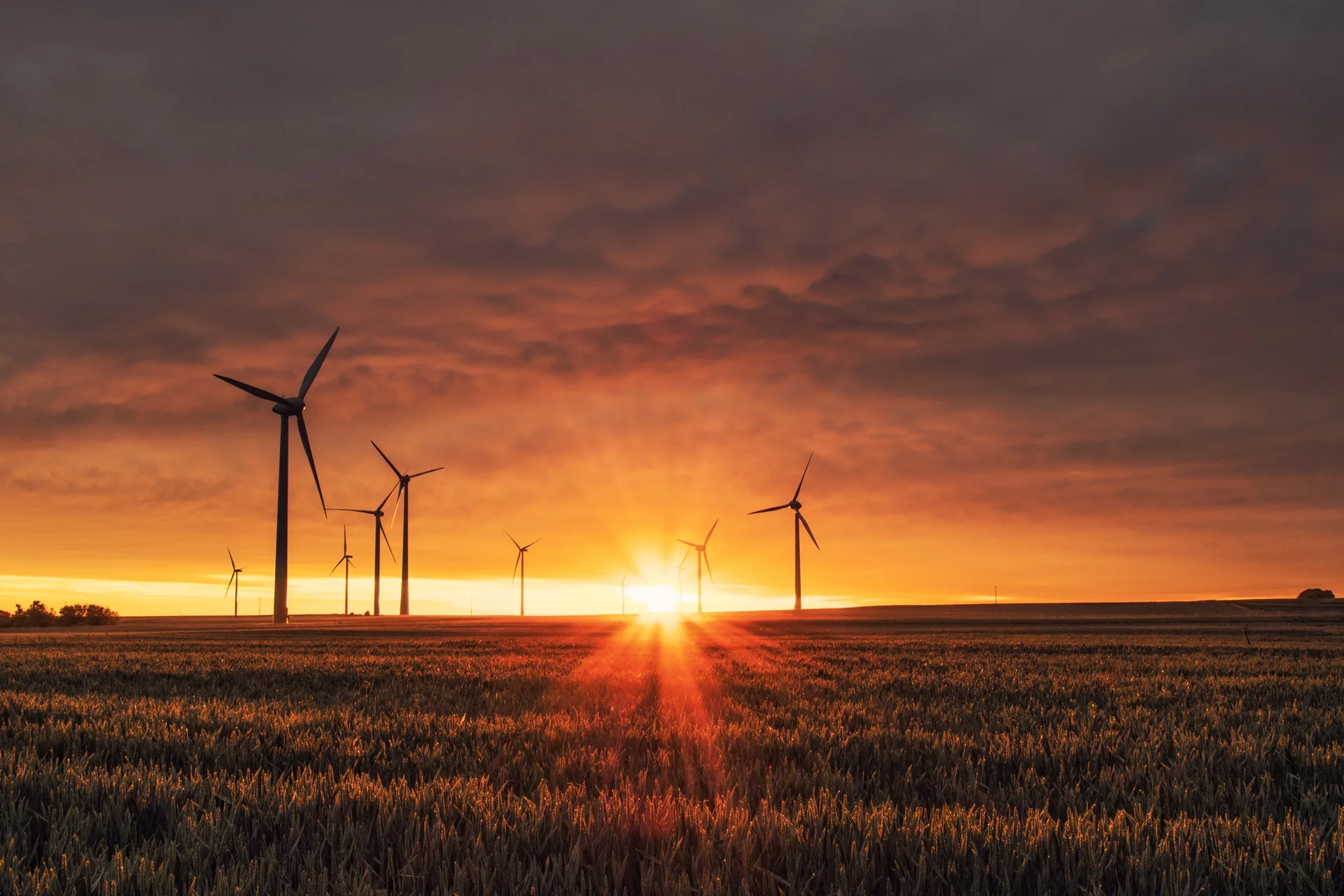Wind Energy
Wind energy is generated through the use of wind turbines. As wind moves over turbine blades, it causes lift, the same effect used by airplane wings. Lift causes the wind turbine blades to rotate. The rotating blades in turn rotate an electric generator, creating electricity. The electricity produced by a wind energy project is distributed through the electrical grid to serve local electrical load. Continuous innovation and reduction in costs has made wind power one of the most economic sources of large-scale electricity generation. Each modern wind turbine can supply electricity needs for approximately 750 homes. It is estimated that every 1,000 MW of wind generation will reduce annual carbon dioxide emissions by 2 million tons.
Suitable Locations
First consideration is given to wind speeds and access to available electrical infrastructure. Wind speeds are closely linked to topography with changes in ground elevation dramatically affecting wind patterns. Once regions with strong and consistent winds are selected, consideration is given to site constraints. Environmentally or culturally significant areas, aboriginal areas of interest, homes, roads and other infrastructure, communication signal paths, local development bylaws, and other site-specific constraints are incorporated into the layouts. Designers then perform site visits to ensure that site constraints have been properly identified. Finally, turbulence created by the turbines is modelled to ensure that energy losses are kept low.
Environmental Impact
Greengate’s projects are developed to meet or exceed stringent provincial and federal guidelines. Environmental impact assessments are performed for each project, including a full range of bird and wildlife surveys spanning four seasons. Historical resources and sensitive or rare vegetation are assessed for each turbine sites as locations are finalized. For migratory birds and bats, detailed monitoring is performed during migration seasons to ensure that development of the wind energy project does not interfere with migratory paths. Each wind energy project is designed for minimal adverse impacts on wildlife and the environment.



